How to Calculate Total Fall Distance When Using Fall Protection
Total fall distance is the total distance of a free fall, plus the additional distance encountered during deceleration. When calculating total fall distance for a worker who is working at height, a number of different factors must be considered.
Renowned biologist Leroy Hood said, “if you just focus on the smallest details, you never get the big picture right.” This is often true in the lifting and rigging industry where we can become so focused on price, brand, delivery, or even the smallest details of a product’s functionality. In these instances, we often end up overlooking the big picture. Unfortunately, this can be true when using personal fall protection equipment, as well.
As a distributor of personal fall protection equipment and engineered fall protection systems, we often see our customers pay more attention to things like weight, comfort, and price when it comes to their fall protection equipment. Or, they may put their primary focus on “being tied off.” While all of these things are important considerations, the safety of the worker—the one actually using the equipment—should be the big picture focus.
A conscientious employee working at heights can be wearing reasonably priced, light-weight, and comfortable fall protection gear made by a reputable manufacturer. But, what happens if this worker falls? Will he hit the ground or another piece of equipment before his harness and lanyard stop his fall?
There are many issues regarding the possibilities, considerations, and precautions you need to think about if a worker fell. Unfortunately, it’s entirely possible that a worker can be wearing personal fall protection equipment, encounter a fall, and still incur serious injury because:
- Work site hazards weren’t properly identified and controlled
- The fall arrest system wasn’t properly selected or connected
- The total fall distance wasn’t considered or properly calculated
In this short article, we’ll address how to calculate the total estimated fall distance as well as address some of the other factors you should consider when selecting and using fall protection systems.
Changes in OSHA’s Fall Protection Requirements
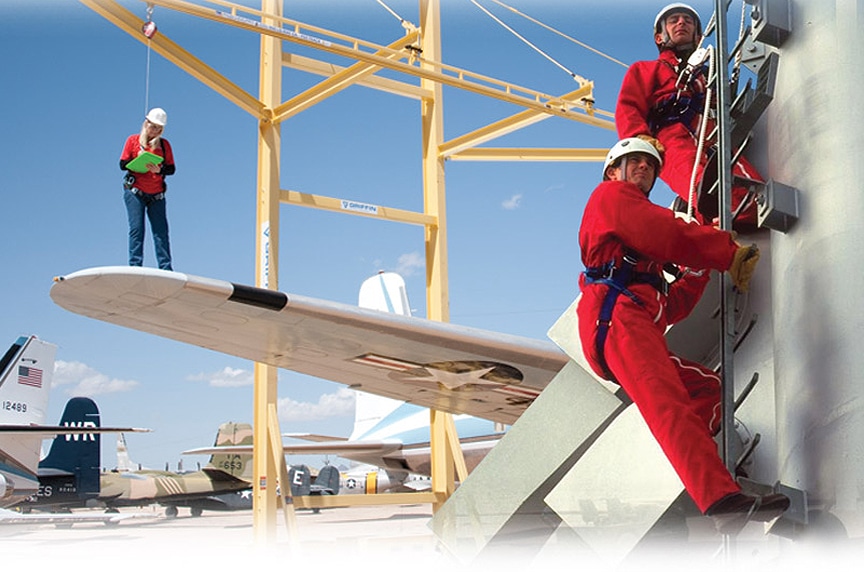
OSHA states that Fall Protection is the #1 most frequently cited violation on the job site and they have established industry-specific requirements (OSHA 1926.501 – Duty to Have Fall Protection) to reduce the risk that comes with working at height. You may be surprised to learn that you can be cited for failing to use fall protection equipment at working heights of as little as 4-8 feet. See below for industry-specific guidelines:
- Four feet – General industry
- Five feet – Shipyards
- Six feet – Construction
- Eight feet – Longshore operations
It used to be that fall protection for workers was something that high-flying steel erectors, constructors, and window washers had to worry about. We of course now know that this is far from reality.
With floor space and efficiency at a premium, production equipment is tightly packed in the most efficient manner for production—not necessarily for fall protection. Frequently, the machinery needs to have clearance above and has lack of floor space below. Often the answer is, “yeah, we only go up there on shut downs and maintenance.”
This is hardly an excuse if a worker were to fall off of the equipment. If the worker was tied off and did fall, was there a clear path to fall, and were other obstructions accounted for? If you calculate the total estimated fall distance to the floor and there are parts of the machine like pumps, decks, and stairs that are 3 feet off the ground, are you taking this into consideration?
Other fall protection issues in manufacturing and maintenance are getting on top of dies, where the dies are so close that the worker can jump from one to another. Loading docks, truck maintenance, tank cleaning, rail-car maintenance, filter changes, roll changes, and pump maintenance all have their own fall issues to contend with.
But the purpose of this article is to keep in mind the big picture, and that is the relatively simple calculation of estimating total fall distance. Read on to get a better understanding of how to calculate total fall distance with information provided by the International Safety Equipment Association (ISEA). Please also remember to read and adhere to all manufacturers’ requirements regarding fall protection.
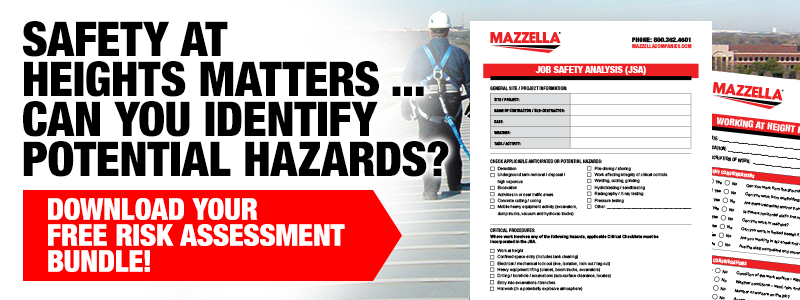
Calculating Free Fall Distance and Total Fall Distance
OSHA requires that potential free fall distances will never exceed 6 feet (1.8 m) when using personal fall protection. So, careful consideration must be given to the way that a fall arrest system is selected and rigged so that a 6-foot fall distance is not exceeded. A qualified person must select the components, materials, anchorage and anchorage connectors to match the system application, the work, workplace hazards, and the environment.
You should always follow the manufacturer’s recommendations when connecting harnesses, lanyards, or retractables so that deceleration distance and elongation are accounted for.
Total fall distance is the total distance of a free fall, plus the additional distance encountered during deceleration. When calculating total fall distance for a worker who is working at height, all of the following factors must be considered:
- Length of lanyard / Self-retracting lifeline – The actual measured length of the lanyard or retractable device that the worker uses to connect their harness to an anchorage point.
- Deceleration / Free fall distance – OSHA’s maximum allowable deceleration distance is 3.5 feet which accounts for dynamic elongation of the energy absorber.
- Height of worker – The worker’s height is another critical factor that must be accounted for to consider the total fall distance.
- Distance from the worker’s feet to the harness D-Ring – Accounts for how much the harness will stretch when supporting the worker.
- Safety factor – Allow for an additional safety factor of 3 feet (1 m) below a fallen worker’s feet.
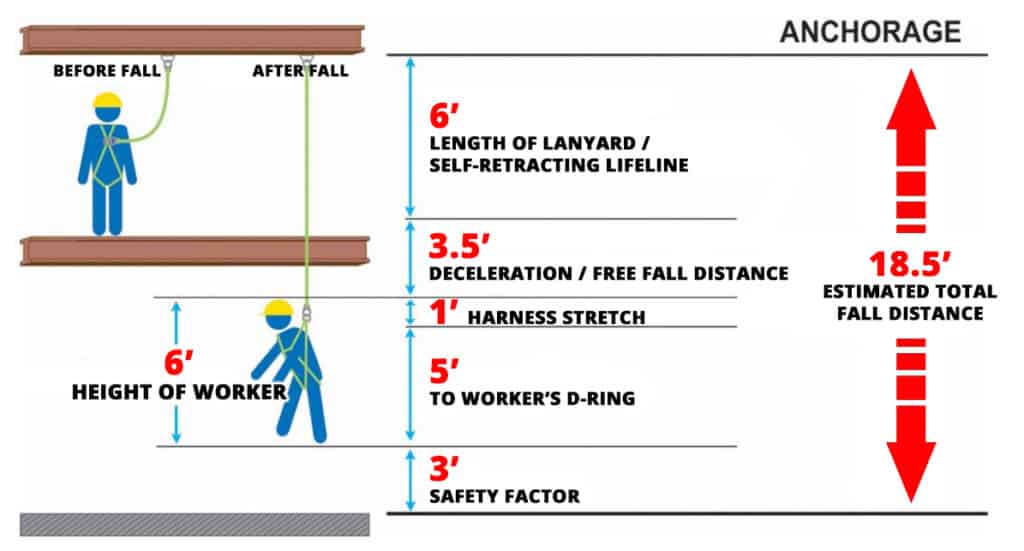
If we run through a scenario shown in the graphic above and use the following factors, we can determine if there is sufficient fall clearance:
- Length of lanyard / Self-retracting lifeline – 6-foot lanyard
- Deceleration distance – 3.5-foot free fall
- Harness stretch – 1 foot of harness stretch
- Height of worker – 6 feet
- Distance from worker’s feet to D-Ring – 5 feet
- Safety factor – 3 feet
TOTAL FALL DISTANCE: 18.5 feet
In this case, a 6-foot worker with a 6-foot lanyard would experience a total fall distance of 18.5 feet. If your fall clearance is 18.5 feet or more, than you’ve selected the appropriate length lanyard. If your fall distance is less than 18.5 feet, than you may need to select a shorter lanyard or use a different device like a self-retracting lanyard.
Other Factors to Consider When Planning for Total Fall Distance
Evaluate the work site and identify hazards – Begin planning your fall arrest system and identify the proper fall protection equipment that you will be using. Identify hazards on the work site and consider all possible paths of user movement and fall factors that could affect the user’s safety before, during, and after a fall. Once hazards are identified, a suitable control plan should be implemented.
User movements – Identify necessary movements for the user and the materials and equipment needed to perform the planned work. The plan should ensure that there is no crossing or tangling of connecting equipment of two or more workers. Make sure that users do not clamp, knot, or otherwise prevent the equipment from functioning properly.
Inspect your personal fall protection equipment – Failure to inspect personal fall protection equipment is one of the top 5 reasons a business isn’t OSHA compliant. Most people don’t even realize that they need to perform a visual inspection of their fall protection gear prior to their shift, let alone have a documented annual inspection performed.
Pendulum or swing falls – If a system is not anchored directly above the user, a swing fall can occur where a worker can fall and the force of falling in a pendulum motion can cause serious injury to the worker. Minimize swing falls by working as directly below the anchorage point as possible.
Clear Space in Fall Path – Make sure that enough clearance is available in nearby fall paths to prevent striking an object below. The amount of clearance needed depends on the type of fall protection equipment being used, and the location of the anchorage point.
Rescue and evacuation – Make sure you and your teammates have a rescue plan and a means to implement it. Your rescue plan should take into account the equipment and training necessary for a prompt rescue under all foreseeable conditions. Confined space rescues must follow the provisions of OSHA regulation 29 CFR 1910.146 or 1926.1211.
Wrapping it Up
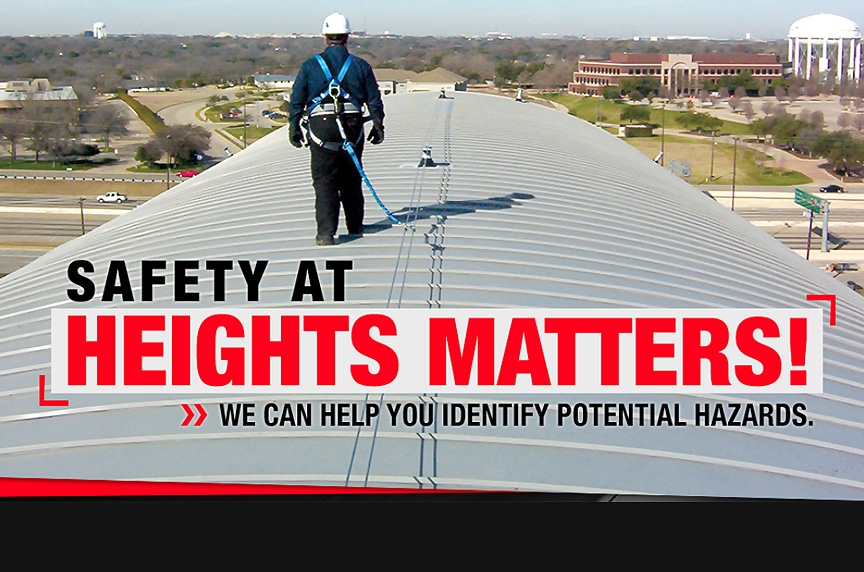
At Mazzella Companies, we have certified trainers on staff who specialize in fall protection. We offer fall protection inspection and training services that meet the new OSHA requirements and we also carry a full line of fall protection equipment, including:
- Harnesses
- Anchors
- Retractables
- Lifeline Systems
- Lanyards
- And so much more
We’ve worked with clients on what appears to be unsolvable fall protection issues, and we along with our clients have always found a way. If you’re interested in learning more about how you can become compliant with fall protection standards, or you’re looking to schedule a training session or consultation on fall protection, contact us to speak with a specialist.
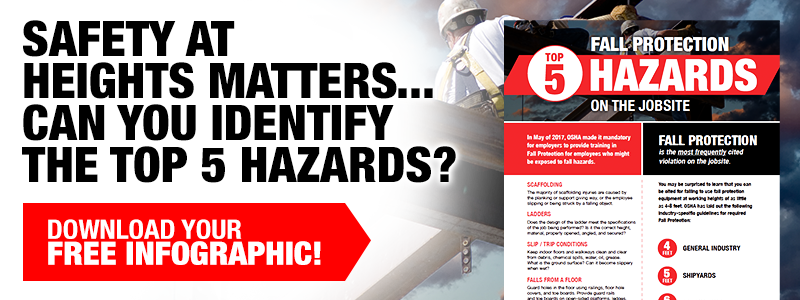
Copyright 2018. Mazzella Companies.
